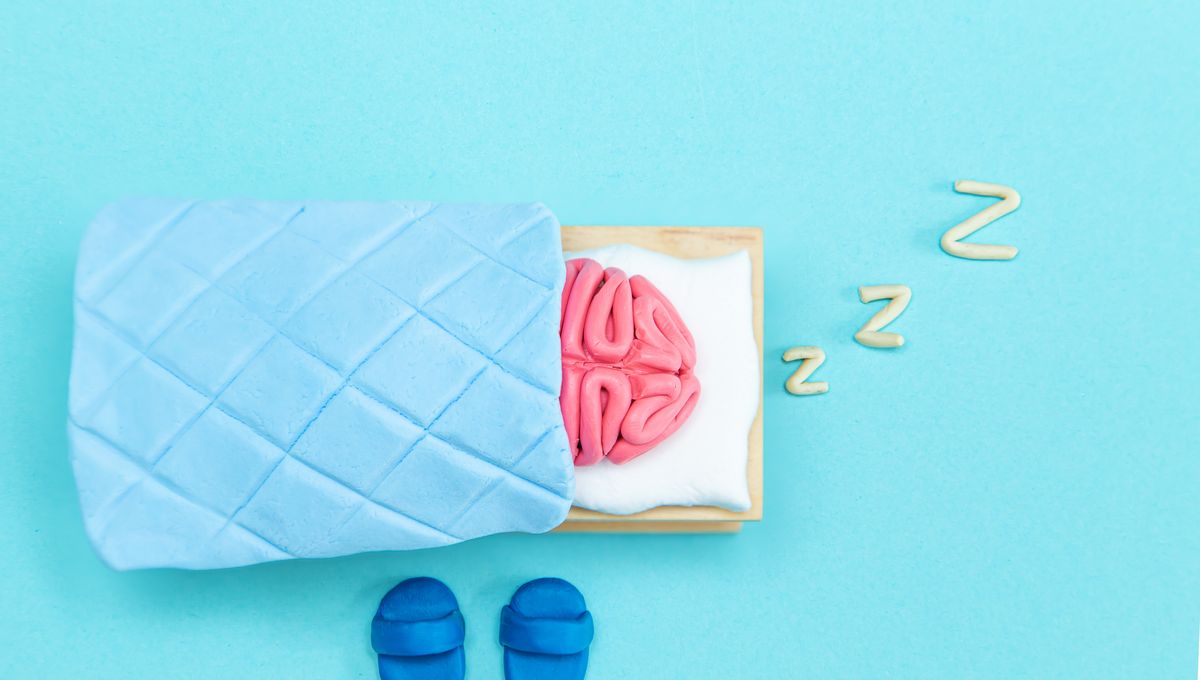
New research has challenged one of the most widely accepted theories about the function of sleep: that it allows the brain’s waste clearance system to take out the trash in the form of harmful toxins that build up while we’re awake.
It’s something we all absolutely have to do, yet scientists know surprisingly little about the function of sleep. It must be important, or else evolution wouldn’t have allowed us to spend several hours a day in a state of such vulnerability, completely unaware of that hungry sabertooth purring just outside the cave.
One theory that’s gained a lot of traction, especially in the last decade, is that sleep provides a vital opportunity to “clean” the brain ready for a new day, via the glymphatic system. However, as the authors of the new study write in their paper, “How metabolites and toxins are cleared from the brain is unresolved.” And their recent findings are calling some assumptions into question.
What did the study find?
Through experiments in mice, the team at Imperial College London found evidence that glymphatic clearance was actually less efficient during sleep and under anesthesia. They applied fluorescent dye to the animals’ brains so they could watch the clearance happening in real-time. In mice that were asleep, clearance was reduced by about 30 percent. In anesthetized mice, the figure was more like 50 percent.
“The field has been so focused on the clearance idea as one of the key reasons why we sleep, that we were very surprised to observe the opposite in our results,” commented study co-lead Professor Nick Franks in a statement.
One of the hypotheses that arose from the glymphatic clearance theory is that impaired sleep, and therefore impaired waste removal, might cause or accelerate the progression of Alzheimer’s disease. The new results don’t necessarily dispute the fact that poor sleep and dementia go hand in hand, but they might suggest a different underlying mechanism at work.
“It may well be that having good sleep does help to reduce dementia risk for reasons other than clearing toxins,” said study co-lead Professor Bill Wisden.
What’s the reaction to the study?
The study attracted a lot of attention when it was published in mid-May 2024, as you might expect for results that offer a counterpoint to such a widely held theory. Speaking to Science, University of California Santa Barbara biologist Stephen Proulx, who has done similar work looking at cerebrospinal fluid flow in the brain, called the study’s methods “very clever.”
However, not every commenter was quite so complimentary.
“You can’t just come in and do something that’s completely different and say all the old data is wrong. I’m actually shocked that this paper was published,” neuroscientist Maiken Nedergaard told Science, mentioning plans to write a letter detailing concerns about the study to Nature Neuroscience, the journal that published it.
Nedergaard led the seminal study, published in 2013, which originally demonstrated the clearance of β-amyloid – of Alzheimer’s disease infamy – from the mouse brain during sleep.
Much of the controversy surrounds particular methodological choices in the new study. The fluorescent dye was injected directly into the brain, which critics say risks creating unreliable data by damaging tissues and increasing intracranial pressure.
Speaking to The Transmitter, Nedergaard was strident in her critiques: “They are unaware of so many basic flaws in the experimental setup that they have.” Other examples of the issues, as Nedergaard sees it, include the fact the animals weren’t in natural sleep, that steps were not taken to ensure the dye successfully reached the tissue, and that the measurements of glymphatic drainage were not taken in optimal locations.
For Franks’ part, he admitted to the Guardian that, like many others, he’d supported the glymphatic clearance theory. “It sounded like a Nobel prize-winning idea,” he said. “The idea that your brain is doing this basic housekeeping during sleep just seems to make sense.”
The team’s self-confessed surprise at their results has only made them keener to investigate further. Wisden commented in the press release, “The other side to our study is that we have shown that brain clearance is highly efficient during the waking state. In general, being awake, active and exercising may more efficiently clean the brain of toxins.”
However, it was in part because of the inevitable contention the work would cause that the team opted not to present it at any conferences. “Step back from it. Publish your paper, do the best you can, and then see what happens,” Franks told The Transmitter.
What happens, in this case at least, is a debate that is no doubt as charged as they suspected it might be. And the best, maybe the only, way to resolve it is to do even more research to try and get to the root of why we spend a third of our lives in peaceful slumber.
Or not so peaceful, as the case may be.
The study is published in the journal Nature Neuroscience.
Source Link: Does Sleep “Clean” The Brain Of Toxins? A New Study Has Sparked Controversy